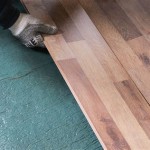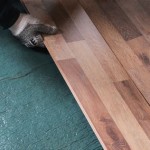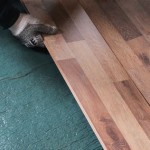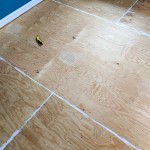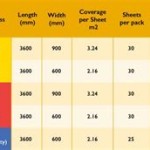What Flooring Can Go Directly On Concrete?
Concrete floors are a common feature in many homes and commercial spaces. They are durable, affordable, and easy to maintain. However, concrete can be cold, hard, and visually unappealing. To remedy this, many people choose to install flooring directly on top of their concrete slabs. This process, known as direct installation, eliminates the need for subfloors and can save time and money. But not all flooring types are suitable for direct installation on concrete. Understanding the characteristics of different flooring options and their compatibility with concrete is crucial for a successful and long-lasting flooring project.
Considerations for Direct Installation on Concrete
Before choosing your flooring, there are a few key considerations when installing flooring directly on concrete:
- Moisture: Concrete is a porous material that can absorb and retain moisture. This moisture can damage certain flooring types, leading to warping, buckling, and mold growth. Therefore, it is crucial to ensure that the concrete slab is dry and properly prepared before installation.
- Levelness: Uneven concrete surfaces can create uneven flooring, causing tripping hazards and premature wear. If the concrete slab is not level, it may require leveling before installation.
- Temperature: Concrete floors can experience fluctuations in temperature, which can affect the expansion and contraction of certain flooring materials. To prevent damage, it is essential to select flooring that is suitable for the expected temperature variations.
Flooring Options Suitable for Direct Installation on Concrete
Several flooring options are suitable for direct installation on concrete, each with its own unique advantages and disadvantages. The best choice for you will depend on your budget, desired aesthetic, and traffic levels. Some popular options include:
1. Tile
Tile is a popular choice for direct installation on concrete due to its durability, moisture resistance, and versatility. Ceramic, porcelain, and natural stone tiles are all suitable for this application. However, remember that tile can be cold and hard underfoot. For these reasons, it is often used in areas like kitchens, bathrooms, and entryways. Installation usually involves thinset mortar and grout, requiring careful planning and execution.
2. Laminate Flooring
Laminate flooring is a cost-effective and durable alternative to hardwood. It consists of multiple layers, including a core layer that makes it resistant to moisture and impact. Laminate flooring can be installed directly on concrete using a floating method, where planks are interlocked without being attached to the subfloor. This method allows for expansion and contraction due to temperature fluctuations. However, laminate flooring is not as durable as hardwood and may require a moisture barrier underneath.
3. Engineered Hardwood
Engineered hardwood flooring is another option for direct installation on concrete. It is made of multiple layers of wood, with a top layer of real hardwood veneer. This construction allows for greater stability and less susceptibility to moisture damage compared to solid hardwood. Engineered hardwood can be installed using adhesive or a floating method, depending on the specific product and manufacturer's recommendations.
4. Vinyl Plank and Tile
Vinyl plank and tile flooring has gained immense popularity in recent years due to its affordability, durability, and ease of installation. It is waterproof, scratch-resistant, and often comes in realistic wood or stone designs. Installation typically involves gluing the planks or tiles to the concrete subfloor or using a click-lock system for a floating installation. Vinyl flooring is a good choice for high-traffic areas and kitchens.
5. Luxury Vinyl Tile (LVT)
Luxury vinyl tile (LVT) is a high-end version of vinyl flooring, offering enhanced durability, design, and functionality. It features a thicker wear layer and a wider range of realistic wood or stone visuals. LVT is typically installed using a floating method or with adhesive, depending on the chosen product and manufacturer's instructions. As with vinyl plank and tile, LVT is water-resistant and suitable for high-traffic areas.
6. Concrete Polishing
While not technically flooring, concrete polishing offers an attractive and durable solution for concrete floors. This process involves grinding and polishing the concrete surface, resulting in a strong, glossy finish. Concrete polishing is suitable for commercial and industrial spaces, as well as residential areas where a sleek and modern aesthetic is desired. It is important to note that polishing only enhances the existing concrete and does not mask imperfections.
Conclusion
Choosing the right flooring for direct installation on concrete requires careful planning and consideration of your needs and preferences. By evaluating the suitability of various flooring options, you can ensure a successful and long-lasting flooring project that enhances the aesthetics, functionality, and value of your space.

How To Install Tongue Groove Hardwood Floors Over Concrete

How To Install A Wood Subfloor Over Concrete Rona

How To Lay Flooring On Concrete Factory Direct

The Best Floors To Have Installed Onto Concrete Empire Today Blog

Guidelines For Hardwood Floor Installation Over Concrete

Fitting Hardwood Floor To Concrete Wood And Beyond Blog

A Complete Guide On How To Install Laminate Flooring Concrete

How To Lay Flooring On Concrete Factory Direct

Laminate Flooring On Concrete Basement Floors Expert Installation Guide Csg Renovation

Tips For Installing Vinyl Plank Over Concrete Floors Lemon Thistle
See Also
